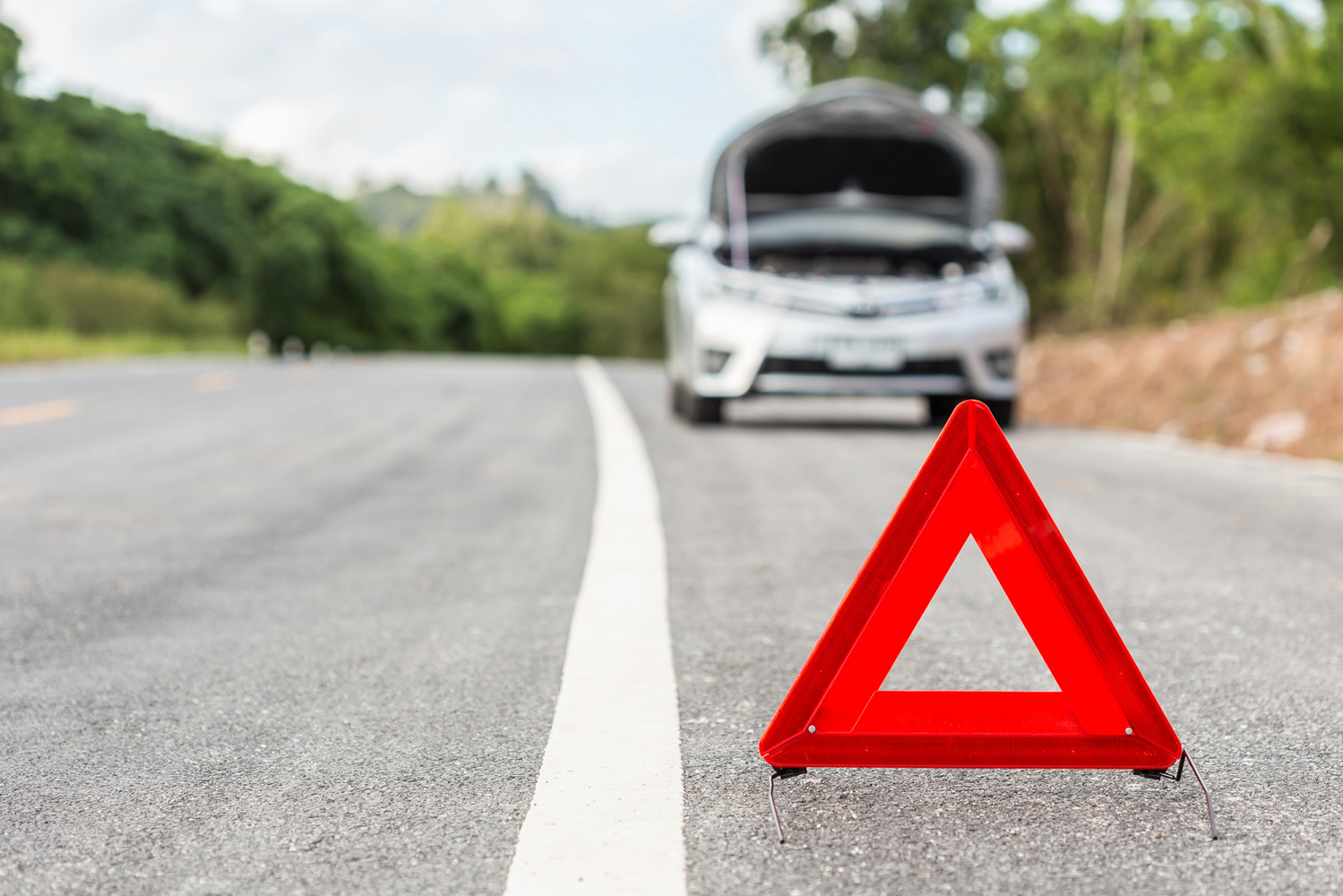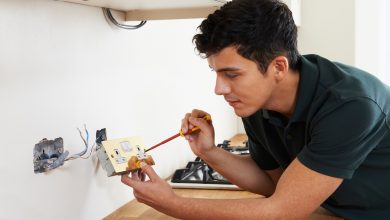Experiencing a vehicle breakdown can be stressful and unexpected, but knowing how to handle the situation calmly and efficiently is essential for your safety and the safety of others on the road. In this article, we will discuss the steps to take when you find yourself stuck on the road due to a vehicle breakdown.
Safety First: Prioritizing Your Well-Being
- Find a Safe Spot: If possible, pull your vehicle off the road to a safe location, such as the shoulder or an exit ramp.
- Turn on Hazard Lights: Activate your hazard lights to alert other drivers that your vehicle is not moving.
2. Assess the Situation: Identifying the Issue
- Diagnose the Problem: If you’re comfortable and it’s safe, try to identify the cause of the breakdown (e.g., flat tire, overheating).
3. Call for Help: Seeking Assistance
- Contact Roadside Assistance: If you have a roadside assistance service, call them for help with towing, repairs, or fuel delivery.
- Emergency Services: If you’re in a dangerous situation or your vehicle is blocking traffic, call emergency services for assistance.
4. Communicate Your Location: Providing Information
- Share Your Location: Use your smartphone’s GPS or a location-sharing app to provide your exact whereabouts to assistance providers.
5. Stay Visible: Making Your Presence Known
- Use Reflective Items: If it’s dark, place reflective triangles or flares behind your vehicle to increase visibility to other drivers.
6. Remain in Your Vehicle: Staying Safe
- Stay Inside: Unless it’s unsafe, stay inside your vehicle to avoid the risk of being hit by passing traffic.
7. Call Family or Friends: Informing Loved Ones
- Notify a Trusted Contact: Let a family member or friend know your situation and your location for added security.
8. Wait Patiently: Remaining Calm
- Keep Calm: While waiting for assistance, remain patient and avoid unnecessary stress.
9. Basic Tools and Supplies: Be Prepared
- Carry Essentials: Keep a roadside emergency kit with essentials like water, snacks, a flashlight, and basic tools.
10. Use Caution: Interacting with Strangers – Be Cautious: If a stranger offers help, exercise caution and don’t share personal information.
11. Know Your Limits: Basic Repairs – If you’re comfortable and it’s safe, attempt minor repairs like changing a flat tire or jump-starting a dead battery.
12. Stay Hydrated: Taking Care of Yourself – Drink Water: Keep hydrated, especially in hot weather, to stay focused and alert.
13. Be Patient: Waiting for Assistance – Understand that help may take time to arrive, and avoid unnecessary frustration.
14. Plan Ahead: Preventive Measures – Regular Maintenance: Keep your vehicle well-maintained to reduce the risk of breakdowns.
15. Know Your Location: Route Awareness – Familiarize yourself with nearby landmarks or mile markers to accurately communicate your location.
16. Be Mindful of Traffic: Traffic Safety – If you must exit your vehicle, do so on the side away from traffic and remain alert to your surroundings.
17. Keep Your Phone Charged: Communication – Ensure your phone is adequately charged before embarking on a journey.
18. Carry Important Documents: Document Preparedness – Have necessary documents like your driver’s license, insurance, and vehicle registration easily accessible.
19. Stay Informed: Updates and Alerts – Tune in to traffic updates or news broadcasts for information about road closures or traffic conditions.
20. Learn Basic Repairs: Empower Yourself – Familiarize yourself with basic car repairs to handle minor issues in case of an emergency.
Experiencing a vehicle breakdown can be inconvenient, but being prepared and knowing how to respond can make all the difference. By following these steps and maintaining a sense of calm, you can ensure your safety and take appropriate actions to resolve the situation efficiently. Remember, your well-being is a top priority, and taking the necessary precautions can help you navigate through unexpected challenges on the road.
Navigating a Car Accident: What to Do and Know in Case of an Accident
Car accidents can happen unexpectedly and can be disorienting and stressful. Knowing how to respond and what steps to take immediately after a car accident is crucial for your safety, the well-being of others involved, and the legal process that may follow. This article outlines essential actions to take and important information to be aware of in the event of a car accident.
1. Prioritize Safety: Ensure Immediate Safety
- Check for Injuries: Assess your own well-being and that of passengers; call for medical help if needed.
- Move to a Safe Area: If possible and it’s safe, move vehicles out of traffic to prevent further accidents.
2. Call for Help: Seek Emergency Assistance
- Contact Authorities: Call the police to report the accident, provide accurate details, and request medical assistance if required.
3. Exchange Information: Gather Essential Details
- Exchange Information: Share contact, insurance, and vehicle details with the other driver(s) involved.
- Witness Accounts: If available, collect contact information from witnesses who observed the accident.
4. Document the Scene: Gather Evidence
- Take Photos: Use your smartphone to document the accident scene, vehicle damage, and any relevant road signs.
5. Stay Calm: Manage Emotions
- Stay Calm: Keep emotions in check and avoid engaging in confrontations with other parties.
6. Avoid Admissions: Limit Discussions
- Avoid Admissions: Refrain from admitting fault or discussing liability with other parties.
7. Police Report: Obtain a Detailed Report
- Police Report: Cooperate with law enforcement and provide accurate information for the official accident report.
8. Medical Evaluation: Prioritize Health
- Seek Medical Attention: Even if injuries seem minor, consult a healthcare professional for an evaluation.
9. Notify Insurance: Report the Accident
- Contact Your Insurance: Inform your insurance company about the accident, providing accurate details.
10. Follow Legal Requirements: Adhere to Regulations – State Laws: Familiarize yourself with local regulations regarding reporting accidents, especially if injuries or significant damage are involved.
11. Gather Accident Details: Key Information – Note Details: Document the time, date, location, weather conditions, and any other relevant factors.
12. Be Honest: Provide Accurate Information – Truthful Account: Provide accurate and honest information when interacting with law enforcement, medical professionals, and insurance.
13. Exchange Contact Details: Ensure Communication – Share Contacts: Exchange phone numbers, email addresses, and other necessary contact information with other parties.
14. File an Accident Report: Official Documentation – DMV Report: If required, file an accident report with the Department of Motor Vehicles within the specified timeframe.
15. Seek Legal Advice: Consult a Professional – Legal Guidance: If necessary, consult an attorney specializing in personal injury or car accidents.
16. Preserve Evidence: Retain Documentation – Maintain Records: Keep copies of all documents, reports, and correspondence related to the accident.
17. Understand Your Rights: Know Your Legal Rights – Understand Liability: Be aware of your legal rights and responsibilities in accordance with local laws.
18. Notify Family or Friends: Inform Loved Ones – Share Information: Keep family or friends informed about the accident and your well-being.
19. Stay Informed: Stay Updated – Follow Up: Stay informed about the progress of any legal or insurance matters related to the accident.
20. Practice Defensive Driving: Prevent Future Accidents – Defensive Driving: Learn from the accident and implement safe driving practices to prevent future incidents.
Experiencing a car accident can be overwhelming, but knowing how to respond can help mitigate the stress and ensure a smoother process for all parties involved. By following these steps and prioritizing safety, communication, and accurate documentation, you can navigate the aftermath of a car accident with confidence and take the necessary steps to address any legal, medical, or insurance matters that may arise. Remember, your well-being and the well-being of others should always be the top priority in any accident situation.


















